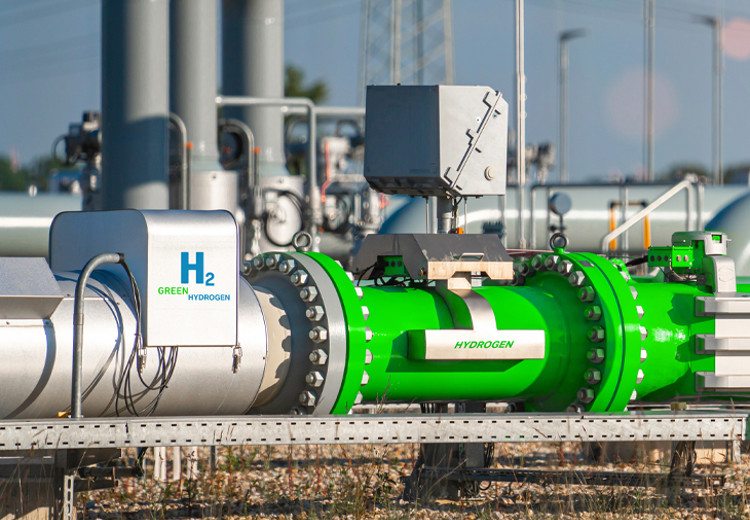Gas Engines
Smooth operation for over 90,000 hours
28 August 2024
09 June 2023
Future engines and fuels set new challenges for lubricants

Tightening emissions mandates and a growing demand to generate power from more sustainable sources are driving significant change to stationary gas engines. Insight assesses the impact these factors are having on the formulation of next generation gas engine oils.
In response to the introduction of greenhouse gas reduction mandates and sustainability goals the speed of the electrification the transportation and industrial sectors is increasing. Not only does this drive up demand for power but also the need to generate as much of it as possible from lower carbon and more renewable sources. The International Energy Agency (IEA) says that currently natural gas accounts for about a quarter of global electricity generation, a figure that can be expected to continue to grow in the coming years as it displaces coal-fired generation. Although, in the longer term, the use of natural gas in power generation is expected to fall.
Increased use of low-emissions gases such as biogas, hydrogen and ammonia will create new opportunities for gas engines.
Further opportunities come in the ability of gas engines to support renewable production. Here, the use of renewables in electricity generation, led by solar and wind, is forecast to rise to about 50% by 2030 and 80% by 2050. But, because the weather-dependent production may be insufficient at times an additional power source is necessary to maintain grid power.
Gas engines start and ramp up or down quickly making them a good match when high shares of variable renewables are used.
Change in the industry is being driven by both regulatory and end-user demands. The need to reduce emissions has driven the development of high efficiency engines and increased the use of aftertreatment devices. At the same time end users are demanding increased engine efficiency and reliability to help keep maintenance, engine downtime and running costs down, along with fuel flexibility to help reduce greenhouse gas emissions.
Efficiency: In the quest for improved efficiency and power, OEMs are introducing high brake mean effective pressure (or BMEP) engines to their line up – and more than 26 bar can be expected for mainstream engines. These new efficient engine designs operate at higher temperatures and pressures and have very different lubrication needs from their predecessors. At the same time sump sizes are getting smaller, which means that despite these more challenging conditions, gas engines demand more protection from less lubricant, which must also continue to work much harder for longer periods.
Lubricants offering corrosion and deposit control over sufficiently long drain intervals are needed in these latest engines.
Reliability: Gas engine operators and end users are also looking to maximize profitability, through improved reliability over the lifetime of the engine, longer service intervals and fuel flexibility. This requires the use of robust lubricant technology that can handle the additional stresses of increased engine power and alternative fuels while keeping the engine running 24/7 until the recommended maintenance interval and beyond. Since there are no industry-wide engine oil standards, end users typically change the oil based on the OEM’s recommended requirements for oil condemning limits - or in remote locations - based on technician availability.
Lubricants that control viscosity increase, oxidation, nitration and base number depletion over longer intervals are required.
Emissions: A further driver for change is the reduction of greenhouse gases and, in the gas engine world, enabling the use of low-value landfill and biogas has been increasingly important to end users in pursuit of their carbon reduction goals. Currently biogas, which is generated in the breakdown of natural organic matter, such as organic and agricultural wastes or crops, represents only a small proportion of power generation. IEA suggests policy actions need to reflect the multiple benefits of using bioenergy for electricity, including rural development, waste management and dispatchability. The organisation forecasts that the production of biogas will more than double by 2040, with most used in power and heat generation. This increased use of renewable gas brings additional challenges in terms of contaminants and strong acids.
Lubricants for use with biogas must deal with harsh conditions, deliver hardware protection and maintain oil drain intervals.
In line with decarbonisation and sustainability targets, OEMs are also investing in research into the use of other alternative fuels such as green hydrogen and ammonia for stationary gas engines. IEA estimates that low-emission fuels, in the form of biogases, hydrogen and ammonia, could provide around 2% of global electricity generation by 2030.
In our view, these applications are likely to require lubricants with lower ash levels as future catalyst compatibility starts to become more important. However, striking a balance defined by the engine, operation and fuel gas types will be key to ensuring both adequate engine performance and catalyst protection are maintained. Also, in support of sustainability goals, the use of greener bio-based and re-refined base stocks is expected to grow, which may drive further change to gas engine lubricant formulations.
We expect future stationary gas engine lubricants to look very different from those of today.
While the future may be hard to predict, sustainability and emissions reduction can be expected to continue to drive innovation in the gas engine market. As new engine designs and fuels are introduced they will present new challenges and the need to tailor lubricants to meet their specific needs will increase. Infineum is building on its gas engine lubrication experience to ensure that additive technologies and formulations are ready to meet the demands of this changing market.
Sign up to receive monthly updates via email